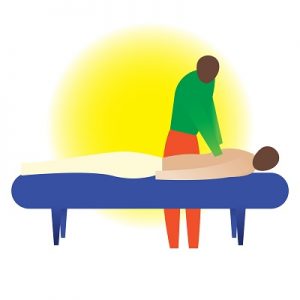Massage Therapy
 By and large, massage therapy that is performed by a properly schooled and well experienced massage therapist who practices his or her art prudently and with due caution, is risk free to its recipient’s health and wellbeing.
By and large, massage therapy that is performed by a properly schooled and well experienced massage therapist who practices his or her art prudently and with due caution, is risk free to its recipient’s health and wellbeing.
Massage therapists must be selected very careful and before scheduling an appointment with one, check their credentials, licenses and references. Do not hesitate to ask him or her questions regarding their expertise and experience.
Regardless of how it is phrased or worded, one question which must always be asked of a potential massage is the following, “Which health conditions would you consider preclusive of massage therapy and why?” The answer should include, but be not limited to, the following:
Cancer
Massage therapy comes in different forms which affect the body differently. There are also many different types of cancers and patients may be at different stages and receiving different treatments. Continue reading
 Massage therapy is a broad term that encompasses a wide variety of procedures and methods of pressing, rubbing and manipulating muscles and other soft body tissues such as tendons, ligaments, skin and connective tissues.
Massage therapy is a broad term that encompasses a wide variety of procedures and methods of pressing, rubbing and manipulating muscles and other soft body tissues such as tendons, ligaments, skin and connective tissues.
The main objective of massage therapy is to relax the soft tissues while promoting an increased delivery of blood and oxygen to the areas being massages and, therefore, to decrease tightness and pain.
Massage therapy is most often accomplished by utilizing the massage therapist’s fingers, hands, arms, elbows and/or feet. Occasionally, however, mechanical and electronic devices may be also used.
As a matter of fact, there are more than eighty official types of massage therapy treatments but some of the most widely known are the following:
Deep Tissue Massage
This technique uses a combination of strokes and deep finger pressure applied way down under the skin and into the muscles at the painful sites in order to breakup knots and loosen tightness. Continue reading






